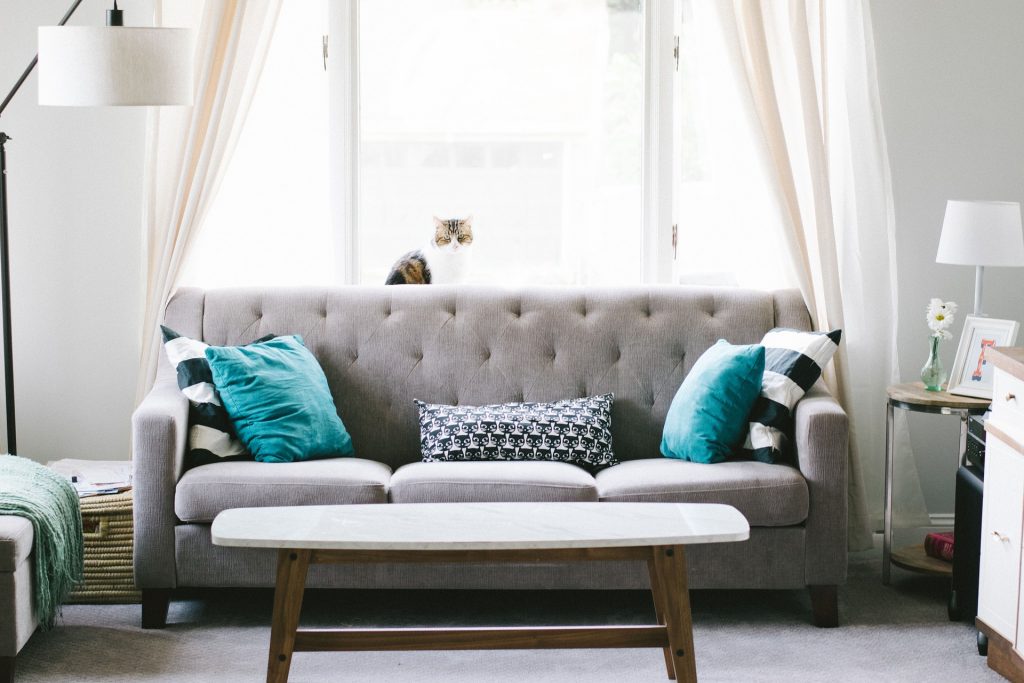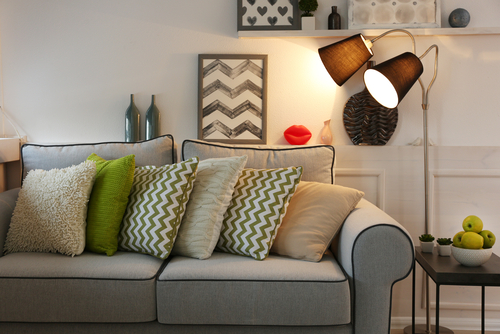Proper lighting in the living room is key, so we talked to the experts about what are the factors not to follow when planning the lighting of the living room.

Daylight planning
While some design flaws can be easily corrected or even ignored, it is impossible to live with lighting defects in the living room, as it also affects our mood. Proper lighting can help us realize our living room interior design plans by making the most of the architecture of the space, highlighting furnishings and works of art, and, of course, creating a beautiful element in the room itself.
From crystalline luxury chandeliers to wall lamps, floor, and table lamps, as well as lamps for lighting works of art, lighting stairs, and many other lamps, there are many options that can elevate the room and make it functional.
Let’s see what mistakes can be made when designing lighting for the living room.
LIGHTING ERRORS IN THE LIVING ROOM
In our article, we will cover all the main lighting errors in living rooms that should be avoided. In addition, we have added practical solutions for designing your daytime lighting to the list.
1. USE OF DIM BURNERS
Unpretentious lighting, both in appearance and functionality, plays an important role in a thoughtful system. Turning your home into something extraordinary lies in the finer details – and often it depends on the strength of the lighting. Traditionally, pure light is considered functional, and here the topic is closed, even though often our vision is changed by lighting fixtures.
Choosing the right light will help to form the basis of the style that will lay the foundation for the interior of our living room. Light layers on dimmers and separate circuits allow you to switch between the bright light for cleaning and a softer level for a relaxing atmosphere.
2. THE IMPORTANCE OF AMBIENT OR GENERAL LIGHTING
Think of ambient lighting as a basic canvas on which you can paint a picture with the rest of the light. Ambient lighting is also called general or backlighting and provides general illumination of the room. In the living room, as a rule, ceiling luminaires, spotlights, and fixed wall sconces are equipped with natural light.

Although a chandelier or hanger is rarely needed, the main thing is to create a warm and intimate atmosphere. Be sure to supplement the ceiling lamps with a mixture of wall, floor, and table lamps. This allows not only to change the mood and feeling by pressing a few switches but also to place the lighting where it is most needed.
3. PLACING TABLE AND ALLO LAMPS AT THE WRONG HEIGHT
A mistake that is often made is placing the floor and table lamps at the wrong height. The general rule of thumb is that a regular table lamp – if placed on something – should match the height of the floor lamp nearby.
This may seem trivial, but it is a defect that we see too often in living rooms, and this can cause serious eye pain.
4. WE USE ONLY ONE TYPE OF COLOR ILLUMINATION
Most often, the lighting of the living room is a pendant lamp or chandelier, this type of lighting covers the space with a kind of illumination, which can often be too rough. Lighting at different levels and ideally combined with dimmers allows flexibility, so the amount of light or the direction of illumination can be adjusted depending on the time of day.
Think about how the light changes during the day, and then plan according to it where to place the lamps for the greatest effect. Think about flexible light sources in different situations: a floor lamp with a rotating lever is ideal as an evening reading lamp behind a sofa or chair. It should be borne in mind that color shades can affect the atmosphere of the room, so to add to the mood, choose darker tones that will make it more cozy and homely.
5. CHOOSING THE WRONG LIGHT TEMPERATURE AND COLOR OF THE SPACE
The living room should be warm and inviting, and not unnaturally bright. The basic rule is that you need to use a constant lighting temperature, and it is best to use 2700K warm white.
6. STRATIFICATION OF LAMPS
A really strong spotlight is definitely not ideal for a living room. Instead of the abundance of the ceiling, recessed light bulbs that can make you feel like you’re at an airport or in a sad office booth, we like to fill the rooms with a variety of floor and table lamps, as well as hangings with multiple arms, it’s a good way to create a mood.
7. NOT ENOUGH LIGHTING OPTIONS IN A LARGE LIVING ROOM
For lighting lovers, contrast is important – you need a lot of light and shade in the living room.
Let’s start with the overhead lighting: chandeliers are a great way to “crown” the lighting. Wall lamps are a great way to add a second layer. Decorative wall lamps at head level work well as a light source at eye level. Finally, table lamps illuminate the lower part of the room.
A single layer of lighting is never enough for a living room, and it is important to take into account the wall lighting ideas of the living room, ceiling lighting, wall, and floor lamps, as well as other types of light.
8. NO CONTROL OVER APPEARANCE
The key to adjusting the mood is to use lighting controls so that each effect can be controlled individually. We can try different dimming switches so that you can adjust the light levels. It is also recommended to place the sockets on the floor to avoid pulling the wires in the center of the room.
9. USE ONLY ILLUMINATORS IN A LARGE LIVING ROOM
The problem with subwoofers is that they are too often used in large quantities, and the light emitted by them can be harsh. A better option is to invest in fine lighting in reading corners, for example – these are great for directional and task lighting, but the walls may look dark. Where brighter light is needed, consider a spot or wall lamp.
With the help of light, we highlight the architectural strengths of the room. A timeless approach is to frame the fireplace ledge with a pair of lamps. There is also an opportunity to add a pattern with a decorative shade.
10. THE MAIN LIGHTING IS DISPROPORTIONATE
We can easily freak out when faced with the possibility that our beautiful chandelier is too large or too small for the room’s proportions. For each pendant lamp, it is also necessary to take into account the dimensions of the hanging.
Also, think about how the design should have a place in the air and hang down in the right proportions so that it connects with the furniture in the room and those who use it. We usually tend to set the pendant too high, even though it actually looks better when the light hangs lower. Above the dining table, for example, you can safely lower the lamp
How to make a small bedroom look bigger



